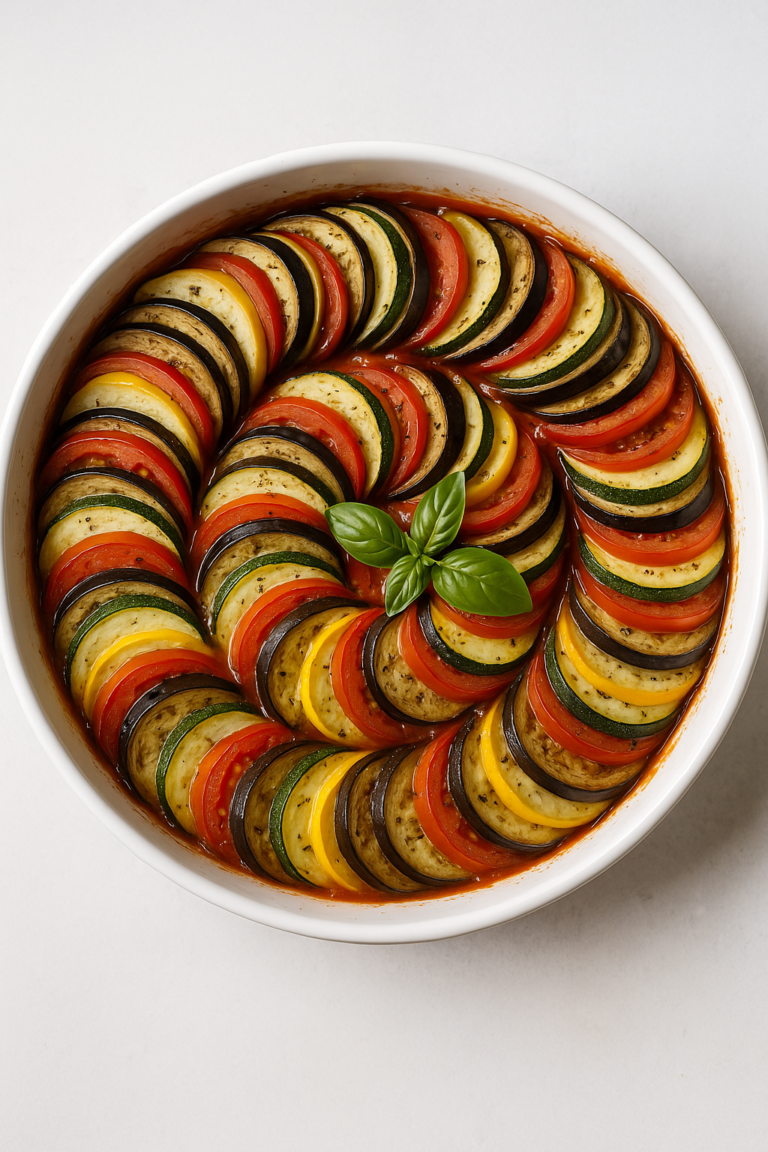
Greek cuisine is known for its vibrant flavors, wholesome ingredients, and deep-rooted traditions passed down through generations.
From hearty moussaka to flaky spanakopita, there’s a warmth and authenticity that shines through every bite.
But among all the savory staples, one creamy condiment stands out for its simplicity, versatility, and refreshing taste—Tzatziki.
This humble yet flavorful yogurt-based dip is a cornerstone in many beloved Greek recipes, offering a perfect balance of tanginess, coolness, and bold garlic notes.
Whether you’re new to Mediterranean cooking or a long-time fan, learning how to make the best Tzatziki ever is a game-changer.
It’s not only easy to prepare, but it’s also packed with nutrients and incredibly adaptable—making it a must-have in any modern kitchen.
In this post, we’ll dive into what makes Tzatziki so special, how it fits into the world of Greek recipes, and show you exactly how to make it at home—authentic, fresh, and absolutely crave-worthy.
🧄 What Is Tzatziki?
A Star Ingredient in Greek Recipes
Tzatziki (pronounced tsah-ZEE-kee) is a creamy, garlicky yogurt sauce that hails from Greece but has earned global appeal.
While similar versions exist across the Mediterranean and Middle East, the Greek version is especially celebrated for its use of strained Greek yogurt, grated cucumber, fresh garlic, olive oil, and lemon juice—often finished with dill or mint for an herby touch.
Tzatziki is more than just a dip—it’s a cultural staple. In traditional Greek homes, it’s served alongside grilled meats, folded into warm pita bread, or offered as part of a meze platter.
Its refreshing flavor and creamy texture make it a natural complement to many savory Greek recipes, especially in the warmer months when cool dishes shine.
What sets Tzatziki apart from other dips is its lightness and tang.
Unlike heavy cream-based sauces or mayonnaise-laden dressings, Tzatziki uses probiotic-rich Greek yogurt as its base, making it a lighter yet flavorful addition to meals.
The grated cucumber adds texture and a cooling effect, while garlic brings the bold punch that keeps you coming back for more.
If you’re looking to dip your toes into Greek recipes, Tzatziki is a fantastic place to start.
It’s approachable, quick to prepare, and elevates even the simplest dishes with its vibrant Mediterranean flavor.
🏛️ The Cultural Significance of Tzatziki in Greek Recipes

More Than a Dip—A Dish with Deep Roots
Tzatziki isn’t just a delicious condiment—it’s a reflection of Greek hospitality, tradition, and simplicity.
In Greece, meals are not just about eating; they’re about gathering, sharing, and enjoying life with loved ones.
Tzatziki often plays a central role in these moments, served generously at the center of the table alongside other Greek recipes like olives, warm bread, grilled meats, and wine.
It’s one of the key components of a meze spread—a variety of small plates meant for communal dining.
These spreads are designed to bring people together, to savor flavors, and to create memories around the table.
Tzatziki’s presence on the table represents the Greek philosophy of food: fresh, simple, and full of flavor.
While you can now find Tzatziki on store shelves across the globe, there’s something deeply personal and grounding about making it from scratch.
It connects you not only to your food, but to a culinary tradition that has been loved and passed down through generations.
And that’s the beauty of cooking with Greek recipes—you’re creating nourishment for both body and soul.
🧪 Customizing Tzatziki to Fit Your Taste or Dietary Needs
A Flexible Recipe for Every Lifestyle
One of the best things about Tzatziki is how adaptable it is.
Whether you’re avoiding dairy, following a vegan diet, watching your sodium, or just enjoy experimenting with new flavors, this versatile dip can be easily customized while still staying true to its Greek recipe roots.
Here are a few ways to make Tzatziki your own:
🥛 Dairy-Free or Vegan? Try This:
- Swap the Greek yogurt for a thick, unsweetened dairy-free alternative like coconut yogurt or cashew yogurt.
- Add a squeeze of lemon and a bit more garlic to boost the tang that’s missing from traditional yogurt.
- Chill for longer to allow plant-based yogurts to absorb the cucumber and herb flavors.
🌱 Add a Twist with Herbs & Spices:
- Traditional Tzatziki uses dill or mint, but you can also experiment with parsley, chives, basil, or even cilantro for a unique flavor spin.
- Add a pinch of ground cumin or sumac for a slightly smoky or citrusy undertone—perfect for pairing with roasted veggies or falafel.
🍋 Brighten or Bolden the Flavor:
- Boost acidity with more lemon juice or a splash of white wine vinegar if you love a tangier dip.
- Love garlic? Add a third clove or roast it first for a mellower flavor. Not a fan? Cut back to one clove and blend thoroughly.
🔥 Make It Spicy:
- For heat lovers, add a dash of crushed red pepper flakes, finely chopped jalapeño, or a drizzle of chili oil.
- This is especially good when serving Tzatziki alongside grilled meats or spicy Mediterranean wraps.
Tzatziki’s versatility is part of what makes it one of the most approachable and customizable Greek recipes you can try.
Whether you’re catering to a dinner party, sticking to specific dietary needs, or just trying something new, this creamy dip is ready to rise to the occasion.
🥒 Why Tzatziki Is a Must-Try from Greek Recipes

More Than a Dip—It’s a Mediterranean Essential
So why exactly is Tzatziki considered a “must-try” when exploring Greek recipes?
Here’s what makes this iconic sauce so special:
- It’s Deliciously Balanced: The creamy tang of Greek yogurt, the crisp freshness of cucumber, the heat of garlic, and the zing of lemon juice all come together in perfect harmony.
- It’s Incredibly Versatile: Tzatziki isn’t limited to one use. It’s perfect as a dip, a spread, a dressing, or even a marinade. You can pair it with grilled meats like chicken souvlaki, use it as a burger topper, or enjoy it as a healthy snack with veggies and pita chips.
- It’s Healthy and Wholesome: As a core component of the Mediterranean diet, Tzatziki fits perfectly into a health-conscious lifestyle. It’s packed with protein, low in carbs, and contains beneficial probiotics that support gut health.
- It’s Budget-Friendly and Easy to Make: With just a few ingredients—many of which you may already have in your kitchen—you can whip up a batch of authentic Tzatziki in less than 15 minutes. No fancy tools or complicated steps required.
- It Elevates Any Meal: Even if you’re not cooking an elaborate Greek feast, a dollop of Tzatziki can instantly transform roasted veggies, grilled proteins, or grain bowls into something special.
In short, Tzatziki is one of those essential Greek recipes that feels indulgent but is actually good for you—and once you learn how to make it, it’s hard to go without.
🧑🍳 How to Make the Best Tzatziki Ever
Authentic Greek Flavor in Every Bite
One of the best things about Tzatziki is how easy it is to make at home using fresh, whole ingredients.
When prepared right, this creamy dip rivals what you’d find in a seaside taverna in Greece.
The key is to use high-quality Greek yogurt, drain the cucumber thoroughly, and let the flavors marinate for the perfect depth of taste.
Here’s a step-by-step guide to help you create the most delicious, authentic version of one of the most beloved Greek recipes.
✨ Ingredients:
- 1 cup full-fat Greek yogurt
(For richness and creaminess. Avoid non-fat yogurt for best texture.) - 1 medium cucumber, grated
(English cucumber is best; seedless and less watery.) - 2 garlic cloves, minced
(Adjust to taste. Raw garlic gives that signature boldness.) - 1 tablespoon extra virgin olive oil
(Adds body and classic Mediterranean flavor.) - 1 tablespoon fresh lemon juice
(Or white wine vinegar for a tangy kick.) - 1 tablespoon fresh dill, finely chopped
(Optional: swap with mint for a cooling twist.) - Salt and pepper to taste
🥄 Instructions:
- Grate the cucumber using a box grater. Sprinkle it with a pinch of salt and place it in a clean kitchen towel or cheesecloth. Squeeze out as much moisture as possible. This step is crucial—if you skip it, your Tzatziki will be watery.
- In a mixing bowl, combine the Greek yogurt, grated and drained cucumber, minced garlic, lemon juice, olive oil, and chopped dill.
- Stir everything together until well mixed. Taste and add salt and pepper to your liking.
- For best results, cover and refrigerate the Tzatziki for at least 30 minutes before serving. This gives the flavors time to develop and mellow beautifully.
💡 Pro Tips:
- Want extra creaminess? Use strained full-fat Greek yogurt like FAGE or make your own by straining plain yogurt in a cheesecloth overnight.
- If you’re garlic-sensitive, try roasting the garlic beforehand for a milder flavor.
- Add a splash of red wine vinegar for extra zing if you’re out of lemon juice.
- Make a double batch—it keeps in the fridge for up to 4 days and goes with everything!
Now that you’ve mastered one of the easiest and most satisfying Greek recipes, let’s talk about how to use Tzatziki in your everyday meals.
🍴 How to Use Tzatziki in Greek Recipes

Endless Pairings with Fresh Mediterranean Flair
Tzatziki is more than just a dip—it’s a multi-purpose Mediterranean condiment that brings any dish to life.
If you’re exploring new Greek recipes or just looking to elevate your weekly meal prep, here are delicious ways to incorporate Tzatziki:
🥙 1. Serve with Chicken Souvlaki or Lamb Gyros
Grilled meats and Tzatziki are a match made in Greek heaven.
Add some chopped onions, tomato, and warm pita and you’ve got an authentic street food-style wrap.
🫓 2. Dip for Warm Pita Bread or Veggie Platters
Hosting friends or making a light snack?
Offer Tzatziki as part of a Greek mezze platter with pita wedges, cherry tomatoes, cucumbers, carrots, and olives.
🍔 3. Spread on Sandwiches, Wraps, or Burgers
Swap out mayo and use Tzatziki instead—it adds flavor, moisture, and a fresh twist, especially on grilled chicken or lamb burgers.
🥗 4. Topping for Grain Bowls or Roasted Veggies
Add a dollop to Mediterranean quinoa or farro bowls. It’s also amazing on top of roasted eggplant, sweet potatoes, or zucchini.
🐟 5. Serve with Baked or Grilled Fish
Tzatziki pairs beautifully with lemony grilled fish, bringing out the freshness while cutting through any richness.
🍳 6. Brunch Twist: Tzatziki + Eggs
Try Tzatziki with a poached or fried egg on sourdough toast—it sounds unexpected, but the combo is amazing.
Tzatziki’s adaptability is part of what makes it one of the most loved and useful Greek recipes. It’s perfect for adding a creamy, zesty layer to any meal without the heaviness of traditional sauces.
🌿 Health Benefits of Tzatziki

A Nutrient-Rich Staple in Healthy Greek Recipes
Tzatziki isn’t just a delicious dip—it’s also incredibly nutritious and aligns beautifully with the principles of the Mediterranean diet, one of the most well-researched and recommended eating styles for long-term health.
With its clean, whole-food ingredients, Tzatziki delivers a range of benefits that go beyond taste.
Here’s why this classic component of many Greek recipes deserves a regular spot on your plate:
🥣 1. Packed with Probiotics
The foundation of Tzatziki is Greek yogurt, which contains live active cultures that support gut health.
Probiotics help balance the gut microbiome, improve digestion, and may even boost immunity and mood. It’s a delicious way to get your daily dose of friendly bacteria.
🥒 2. Low in Calories, Big on Flavor
Tzatziki offers a flavorful alternative to heavier condiments like mayonnaise, ranch, or cream-based dips.
A two-tablespoon serving typically has around 35–50 calories, depending on the yogurt used—making it a smart swap for those watching their calorie intake.
🧄 3. Anti-Inflammatory Properties
Garlic, a key ingredient in Tzatziki, is known for its powerful anti-inflammatory and immune-boosting benefits.
It contains compounds like allicin that have been linked to reduced blood pressure and cholesterol levels.
🍋 4. Rich in Protein
Thanks to Greek yogurt, Tzatziki is a great source of lean protein, which helps support muscle health, curb hunger, and stabilize blood sugar levels.
Just half a cup can deliver 10g or more of protein—especially useful for those on vegetarian or high-protein diets.
🫒 5. Heart-Healthy Fats
When you use extra virgin olive oil in your Tzatziki, you’re adding monounsaturated fats that support cardiovascular health.
Olive oil is a staple in most Greek recipes and is packed with antioxidants like oleocanthal, which help reduce inflammation and oxidative stress.
🌱 6. Naturally Gluten-Free and Low-Carb
Tzatziki fits perfectly into low-carb, keto, Mediterranean, and gluten-free diets.
It’s a satisfying and clean condiment that doesn’t rely on artificial thickeners or added sugars—just simple, nourishing ingredients.
🧘♀️ 7. Hydrating & Cooling
With fresh cucumber and yogurt as key ingredients, Tzatziki is incredibly hydrating and cooling—especially during hot weather or when served with spicy dishes.
It’s a natural way to refresh the body while still enjoying something creamy and indulgent.
✅ Bottom Line:
Tzatziki proves that food can be both delicious and functional.
It’s not only a favorite among classic Greek recipes, but also a smart choice for anyone looking to eat more mindfully without sacrificing flavor.
Whether you’re eating it as a dip, spread, or sauce, you’re giving your body a boost of beneficial nutrients with every bite.
🇬🇷 Why You’ll Keep Coming Back to Tzatziki
A Simple Recipe That Captures the Heart of Greek Cuisine
There’s a reason Tzatziki has stood the test of time in traditional Greek recipes—it’s simple, fresh, and absolutely packed with flavor.
In just minutes, you can whip up a creamy, tangy dip that complements everything from grilled meats and vegetables to wraps and snack boards.
It’s one of those staple recipes that makes any dish feel more vibrant and complete.
But more than just a condiment, Tzatziki reflects the very essence of Greek cooking—celebrating real ingredients, bold flavors, and a balanced approach to eating.
It’s proof that you don’t need complicated techniques or exotic ingredients to make something truly delicious.
Just fresh, wholesome staples like Greek yogurt, cucumber, lemon, garlic, and herbs—ingredients that are easy to find and good for your body.
If you’ve been looking for a way to bring more Mediterranean inspiration into your kitchen, Tzatziki is the perfect place to start.
Once you master this dip, you’ll not only want to add it to your favorite Greek recipes, but you might even find yourself creating new meals just to have an excuse to make it again!
🧺 Ready to Try It? Here’s What to Do Next:
✅ Gather your ingredients—most of them may already be in your fridge.
✅ Make a batch today and let the flavors chill for the full effect.
✅ Pair it with your next dinner, meal prep bowl, or snack board.
✅ Share it with friends and family—it’s guaranteed to impress.
✅ Bookmark or Pin this recipe to come back to anytime you need a fresh, healthy dip.

Best Homemade Tzatziki Sauce (Authentic Greek Recipe)
Ingredients
Equipment
Method
- Grate the cucumber using a box grater. Lightly salt it and place it in a clean towel or cheesecloth. Squeeze out as much moisture as possible. This step prevents the Tzatziki from becoming watery.
- In a medium bowl, combine the Greek yogurt, grated cucumber, minced garlic, lemon juice, olive oil, and chopped dill.
- Mix well until smooth and creamy.
- Season with salt and optional pepper to taste.
- Cover the bowl and refrigerate for at least 30 minutes before serving. This allows the flavors to fully develop.
- Garnish with a drizzle of olive oil and a sprinkle of fresh herbs before serving, if desired.
- Calories: 60
- Protein: 5g
- Fat: 4g
- Carbohydrates: 2g
- Fiber: 0g
- Sugar: 1g
- Sodium: 90mg
Notes
Cucumber Tip: English cucumbers work best because they have fewer seeds and less water content. Flavor Variation: For a milder garlic flavor, roast the garlic cloves before adding. Storage: Store in an airtight container in the refrigerator for up to 4 days. Serving Ideas: Use as a dip for veggies, a spread in wraps, or a sauce for grilled meats like souvlaki or lamb burgers.
💬 Your Turn!
Have you tried making Tzatziki at home before?
What’s your favorite way to enjoy it?
Drop a comment below—I’d love to hear how you’re using this classic from your favorite Greek recipes collection!
And if you’re looking for more Mediterranean dishes, stay tuned—there’s plenty more Greek inspiration coming your way. 🇬🇷
Other Delicious Articles To Try:
26 Easy Homemade Road Trip Snacks That Beat Gas Station Food
As an Amazon Associate, I earn from qualifying purchases.



